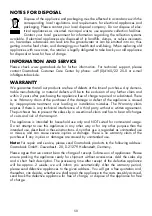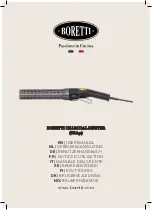
41
overheating.
• When preparing your meal with the Design Table-Top Grill Advanced for the first time,
you should use the temperature probe for measuring the core temperature (temperature
in the centre) of your food (see: ´Using the Temperature Probe`). This way, you will find
out, the best settings for the desired consistency. Thereafter, in probe mode, you can use
the control function for monitoring the cooking process. Set up the target core tempera-
ture and the appliance will sound an acoustic signal, when this temperature is measured
at the tip of the temperature probe (see: ´Modes of Operation`). However, you should
try to place the tip of the temperature probe always at an comparable position in your
food; preferable in the centre.
• If you change the temperature of the grilling area (selectable in normal mode), the coo-
king times will be different, too. Additionally, the consistency of your food will vary. In
general, with higher settings for the temperature of the grilling area, your food will be
somewhat more crispy and crusty. However, when selecting too high temperatures, you
food will burn while the interior is still raw. This holds especially for delicate food as
some vegetables.
Guidelines for Cooking Temperatures
Type of Meat
Well Done
Medium
Medium Rare
Rare
Beef, Lamb, Veal, Ribs
170 °F
(76 °C)
160 °F
(71 °C)
145 °F
(63 °C)
140 °F
(60 °C)
Pork
170 °F
(76 °C)
Poultry: Turkey,
Chicken, Duck
180 °F
(82 °C)
Ham, Veal, Grounded
Beef, Pork or Lamb
160 °F
(71 °C)
Grounded Poultry
(Turkey or Chicken)
165 °F
(74 °C)
















































